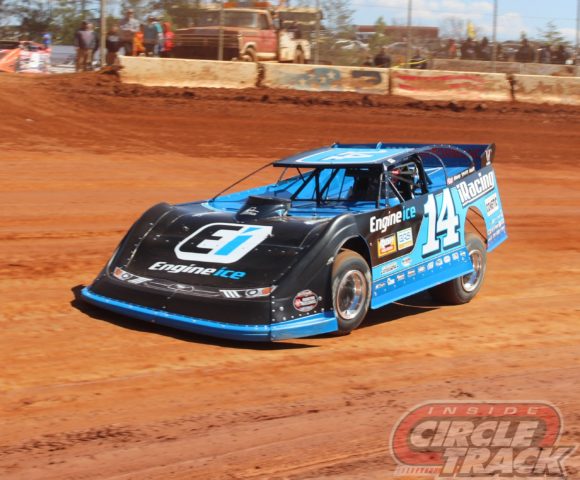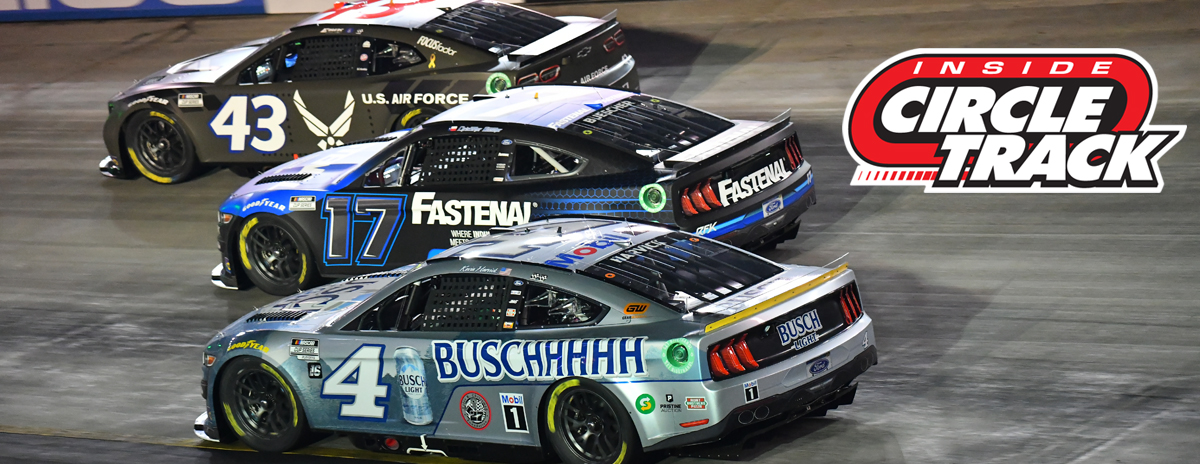
Kyle Larson led a majority of the laps at Dover without being passed on the track(Photo: Getty Images)
There have been examples over the past couple of weeks of “experts” telling us that those who didn’t like the NASCAR Cup Series races at Darlington and Dover just don’t understand true racing. Despite the fact that both of those races featured one driver getting out front and staying there most of the way due to the fact that passing the leader has become more than a little challenging at the sport’s top level. Those two races exemplified an issue that is proving to be all too frequent.
In both cases, the package that allows for cars to have 750 horsepower and “low downforce” due to a shorter rear spoiler on the back of the car was in use.
Martin Truex, Jr. won the Goodyear 400 at Darlington after leading 248 of the 293 laps that made up the race distance. Even though Kyle Larson moved near to the leader’s rear bumper over the course of the closing laps, he was never able to execute a pass for the top spot.
The following week in Dover, it was Larson who showed the way during much of the Drydene 400 as the No. 5 machine led 263 of 400 laps and proved to be very difficult to pass under green flag conditions. As a matter of fact, the pass for the lead that opened the door for Alex Bowman to eventually take the checkered flag did not even take place on the track but instead was made in the pits. And like Larson earlier in the day, once he got out front, Bowman proved just as difficult to pass as his Hendrick Motorsports teammate had been earlier in the day.
These are not the only instances over the past couple of seasons in which the leader has been all but impossible the pass except on restarts or in the pits. Richmond saw Truex and Denny Hamlin combine to lead a total of 314 of the 400 laps before Bowman took the lead following a caution period with 10 laps remaining. Larson led 269 of 325 laps in Atlanta before Ryan Blaney tracked him down late in the going when Larson’s tires faded.
Perhaps the most famous, or infamous, example of the difficulty in passing the leader came last season in Kansas when Kevin Harvick had what appeared to be a dominant car but was unable to pass Joey Logano despite running in the tire tracks of the No. 22 Ford for lap after lap as the race drew to a close.
Some of the races mentioned employed the previously mentioned 750 package while others featured the “high downforce” package that gives the cars 550 horsepower and a taller rear spoiler.
I am not going to claim any sort of expertise in the areas of race car setups or aerodynamics. That said, though, it does seem that the inability to pass the leader has grown more prevalent since teams figured out how to get the noses of the cars so low that they are virtually flush with the racing surface. This issue is not unique to NASCAR, however.
As someone who attends dozens of Dirt Late Model races each year, I see this same type of situation in those events as well. While the preparation of the clay surface certainly plays a significant role in the quality of a dirt race, there is definitely an issue with too much downforce on the noses of those cars as well.

Like NASCAR, Dirt Late Model cars like that of Josh Richards have their noses very low to the ground
I have had Dirt Late Model drivers explain to me the feel of there cars when trailing closely behind another an it sounds very much like the condition described by NASCAR racers. No matter whether NASCAR is using the “high downforce” package with the taller rear spoiler or the “low downforce” package with the shorter rear spoiler, the problem of not being able to pass the front runner seems to persist.
Several years ago, there was a movement among the top dirt racing sanctioning bodies trying to solve that same problem. Like NASCAR, the proposed solution was to cut the size of the rear blade. At that time, a veteran Late Model crew chief told me that, “They’re working on the wrong end of the car if they want more passing”.
The term aero-tight entered the racing dictionary just over two decades ago and has remained since. That term is directly related to the front ends of the race cars, no matter what type of surface they compete on or what rules package is in place.
Relying on those who actually understand the workings of race cars and aerodynamics, it seems to me that creating situation in which the leader can be passed needs to come from the front end of the cars rather than the rear or even inside the engine compartment. Getting air to pass underneath the cars seems to be essential for improving the racing action on the track. In theory at least, getting that to happen causes drivers to have to lift in the turns rather than ride virtually wide open all the way around the track.
Of course, that is more easily said than done. For every rule change made, there are engineers and crew chiefs who will figure out a new way to get their cars to behave as they want them to behave. The rule makers don’t stay ahead of those who have to find ways around those regulations for very long.
Getting back to the original point, it’s difficult for me to call any race in which the leader doesn’t get passed on the track a good one no matter how intense the action for fourth or seventh place might be. And no, this is not a piece meant to sing the praises of the ‘good ole days’ as if the racing back then was glorious back then because it wasn’t always. And yes, there are times in which, no matter what the era or the package in place, one team will hit the setup perfectly and put a beat down on the rest of the field. But it seems as if this scenario has been playing out a bit too often over the past several seasons in NASCAR and other forms of racing.
If NASCAR’s NextGen car is to improve the pack’s ability to pass the leader, its nose needs to be lifted off the ground so that the leader will have to deal with dirty air just like everyone else.
Richard Allen is a member of the National Motorsports Press Association
Respond to this piece on Twitter –> @RichardAllenIDR
or on Facebook –> InsideCircleTrack/Facebook
